You’ve probably encountered these extraordinary felines in movies, social media, or maybe even in person, instantly captivated by their hairless appearance and striking presence. The Sphynx cat’s history dates back to 1966 when a hairless cat was born in Canada due to a natural genetic mutation, originally named the Canadian hairless. These remarkable cats have evolved from a single genetic anomaly into one of the most fascinating and devoted companion breeds in the world.
What makes Sphynx cats so uniquely special goes far beyond their obvious lack of fur. The Sphynx is a highly active and affectionate companion often described as part cat, part dog, and part monkey. Whether you’re considering welcoming one into your home or you’re simply curious about these captivating creatures, understanding their needs and characteristics is essential. Let’s dive into the complete world of Sphynx cats and discover what makes them such extraordinary companions.
The Fascinating Origins and History
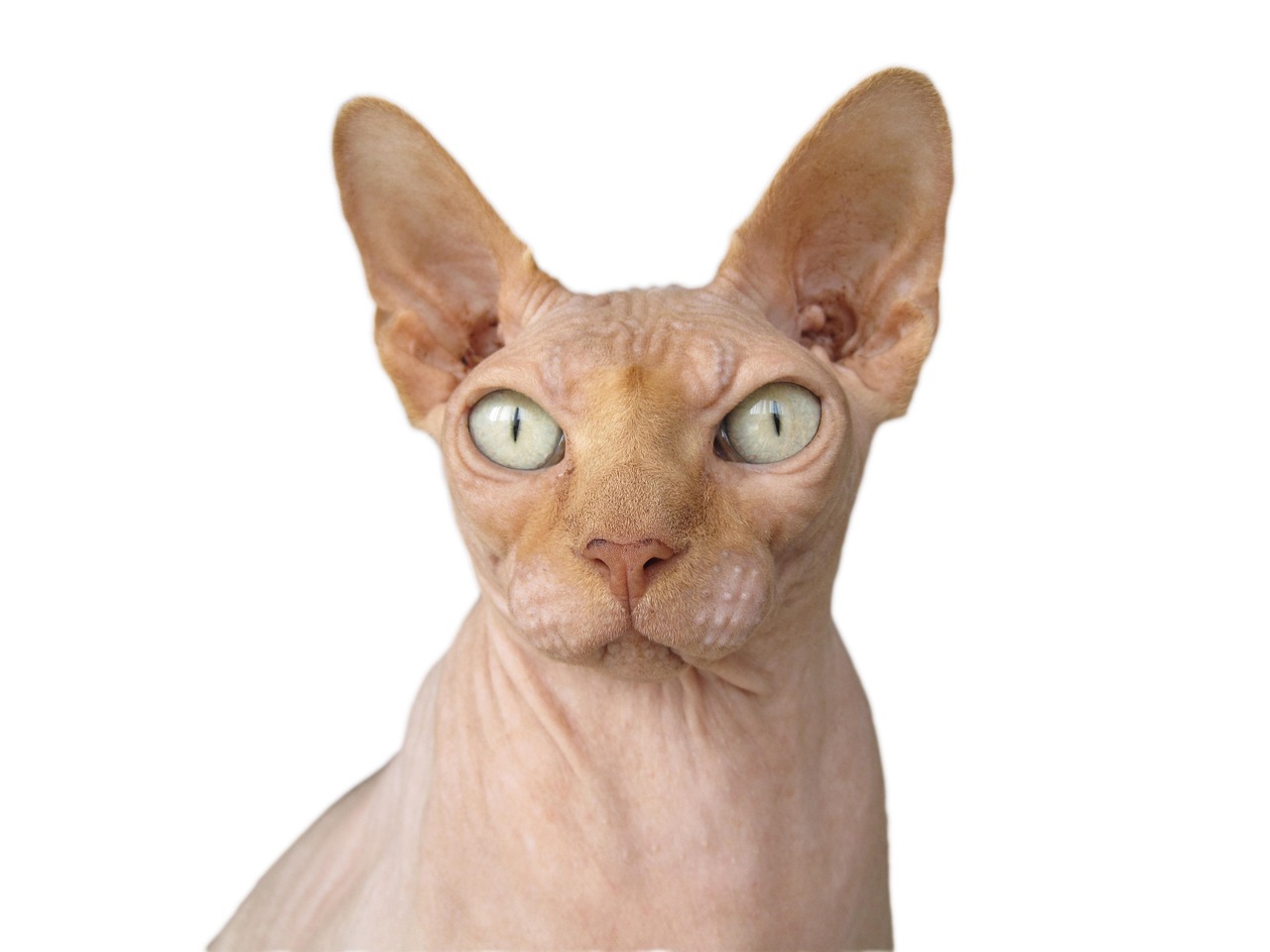
The Sphynx cat’s history dates back to 1966 when a hairless cat was born in Canada due to a natural genetic mutation. This single kitten, born to a domestic shorthair in Toronto, would become the foundation for what we know today as the Sphynx breed. The origin of this strange looking cat is a bit of a riddle: in 1966, a single hairless kitten named Prune was born. After many failed attempts to create a hairless breed with Prune, female descendants of Prune were bred with another nearly hairless breed, the Devon Rex, as well as with American Shorthair cats.
The sphynx as we know it today is the result of selectively breeding these hairless cats to normal-coated cats and then breeding their offspring back again to other hairless cats, a process that has not only produced the desired breed characteristics but also served to widen the gene pool to produce a genetically hardy breed of cat. Breeders continued to carefully and selectively breed Sphynx cats for more than 30 years to make sure that the gene pool was large and varied enough to prevent genetic health issues.
The Cat Fanciers’ Association later accepted the sphynx for competition in the championship class, and other cat associations quickly followed suit. Today, these remarkable cats have earned their place as beloved family members worldwide, known for their distinctive appearance and extraordinary personalities.
Physical Characteristics That Define the Breed
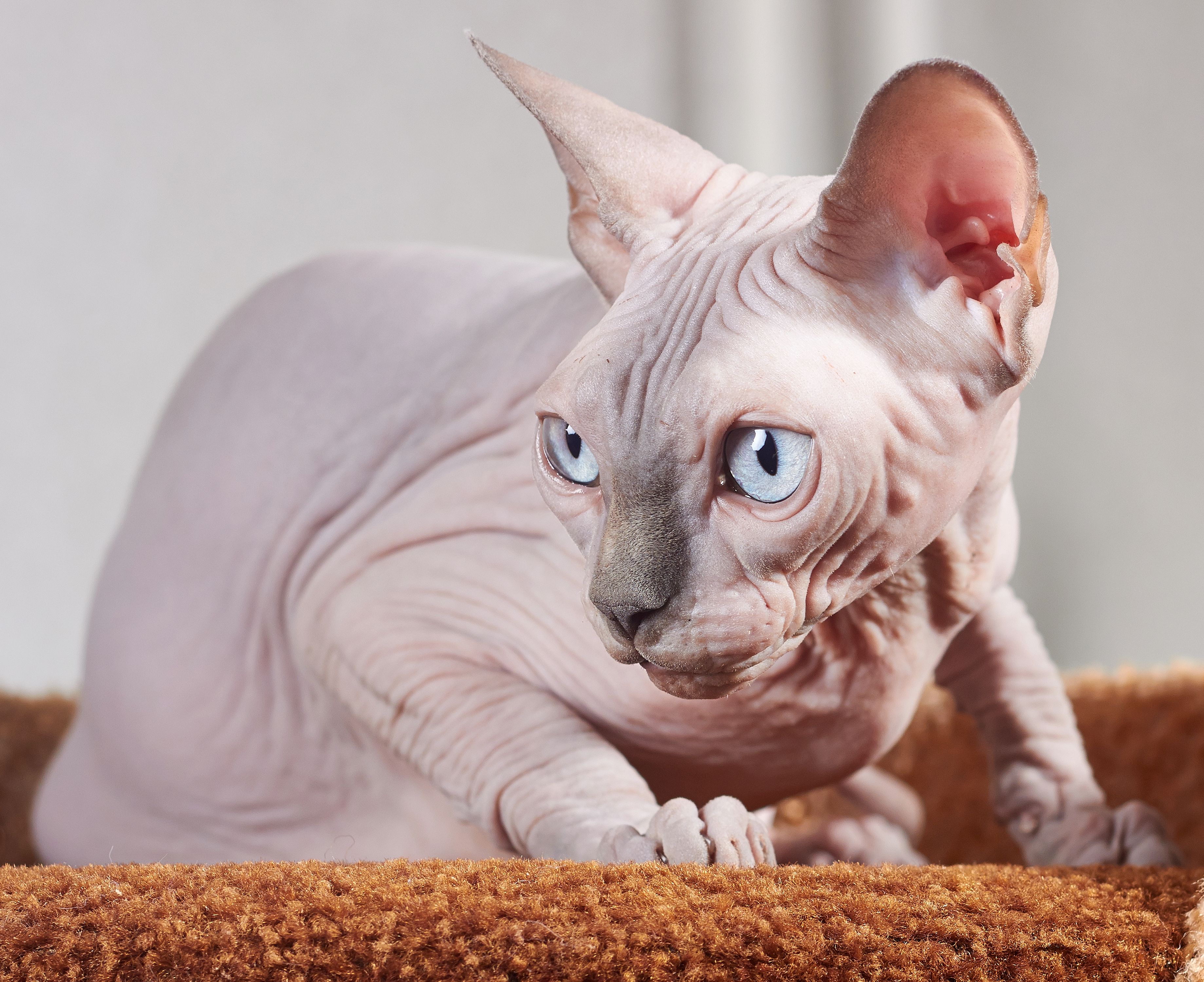
The most obvious feature that sets Sphynx cats apart is their apparent hairlessness, though this isn’t entirely accurate. Sphynx cats are known as bald cats or naked cats, but they actually have soft downy fur. Not truly hairless, this breed’s skin feels like warm Chamois leather and is lightly dusted with soft, fine down nearly impossible to see. The Sphynx lacks a fur coat but does have a sparse covering of downy fur mainly found on their ears, face, tail, and feet.
Despite their round bellies and saggy skin, these loveable cats have broad chests, muscular legs, and impressive jumping skills. Sphynxes have wedge-shaped heads and large, lemon-shaped eyes, giving them a curious expression that matches their high intellect. They are medium-sized, weighing 6 to 12 pounds, with an average lifespan of 8 to 14 years.
Their skin comes in different colors with common cat marking patterns, including solid, point, van, tabby and tortoiseshell. What many people find surprising is that despite lacking a traditional coat, they are covered in very fine fur that makes them feel like warm suede. Sphynx cats have large ears, with little to no fur or ear tufts.
Personality and Temperament Traits

If you’re looking for a quiet, independent cat that keeps to itself, a Sphynx might not be your ideal match. Sphynx cats are very vocal, so they may not be the best breed for people who prefer quiet homes. Sphynx cats thrive in active homes and are an extroverted breed. They get along well with new people, children, and other pets.
The Sphynx has an extroverted personality, enjoys entertaining and will often be the first to greet anyone who enters their home. Energetic and loyal, Sphynx cats are sometimes described as dog-like. These cats form incredibly strong bonds with their human families and genuinely crave attention and interaction.
They don’t like to be alone for long periods. You’ll also find out pretty quickly that they have opinions about everything. Seriously, if they could talk, you’d never get a word in! This desire to be around you, however, does reflect in their neediness. They do not do well when left alone for a long time, so it is important that you are comfortable with the breed’s needy nature to avoid issues like anxiety or depression.
The Myth of Hypoallergenic Claims
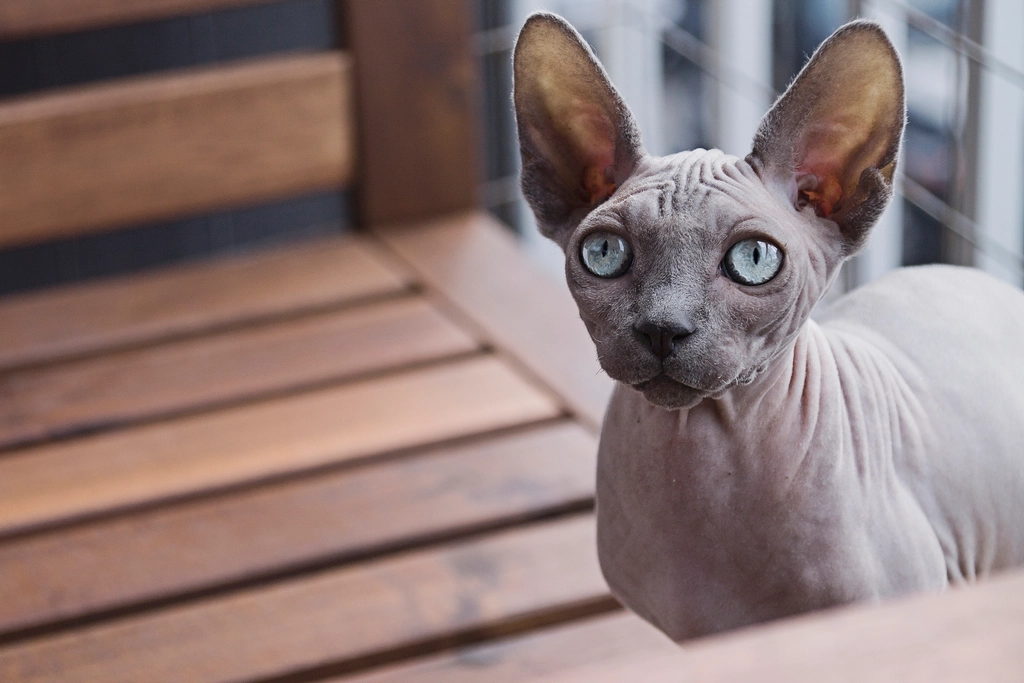
One of the most common misconceptions about Sphynx cats is that they’re hypoallergenic due to their lack of fur. Unfortunately, this simply isn’t true. Like all cats, the Sphynx is not hypoallergenic. They can trigger allergies, so spend time with one to see if you have a reaction. Despite her hairlessness, the sphynx is not considered hypoallergenic because her skin still produces normal amounts of allergy-causing dander.
Some people assume that Sphynx cats are hypoallergenic because they don’t have fluffy coats like their buddies from other breeds. However, cat allergies are actually caused by a protein called Fel d1, which can be found on your kitty’s skin and in their saliva. So while your Sphynx pal’s lack of fur results in less shedding, it doesn’t necessarily mean less sneezing.
While they do shed less than other breeds and can be a good fit for some people with allergies, there are still allergens in their skin and saliva. No cat breed is truly hypoallergenic. So before bringing home a Sphynx kitten, spend time with the breed to see how your allergies react. This is crucial information for anyone considering a Sphynx who suffers from cat allergies.
Special Grooming and Skin Care Needs

Contrary to what you might expect, Sphynx cats actually require more grooming attention than many furry breeds. Sphynx cats tend to have oily skin and need to be bathed regularly to avoid becoming greasy. Without fur, the Sphynx cat can have incredibly oily and sweaty skin that requires frequent bathing. Sphynx cats can need frequent bathing from at least once a week up to once monthly to maintain healthy and clean skin.
Bathe your Sphynx every 4-6 weeks. Over-bathing can strip their skin of natural oils, leading to dryness, while under-bathing can cause oil buildup. Always use a hypoallergenic, cat-safe shampoo to avoid skin irritation. Use warm, not hot, water and a medicated pet shampoo without a powerful scent. When bathing your hairless cat, double-check that you’ve washed out all of the shampoo as any left over shampoo residue could end up bothering their delicate skin later when it dries.
Like the rest of their bodies, Sphynx cats don’t have hair inside their ears. This can cause excessive wax buildup, and if you don’t clean it out regularly, your cat could be more prone to ear infections. Inspect your Sphynx’s ears once a week for any buildup of wax or debris. Gently clean the outer part of the ear with a cotton pad or ball and a vet-approved ear cleaner.
Nutritional Requirements and High Metabolism
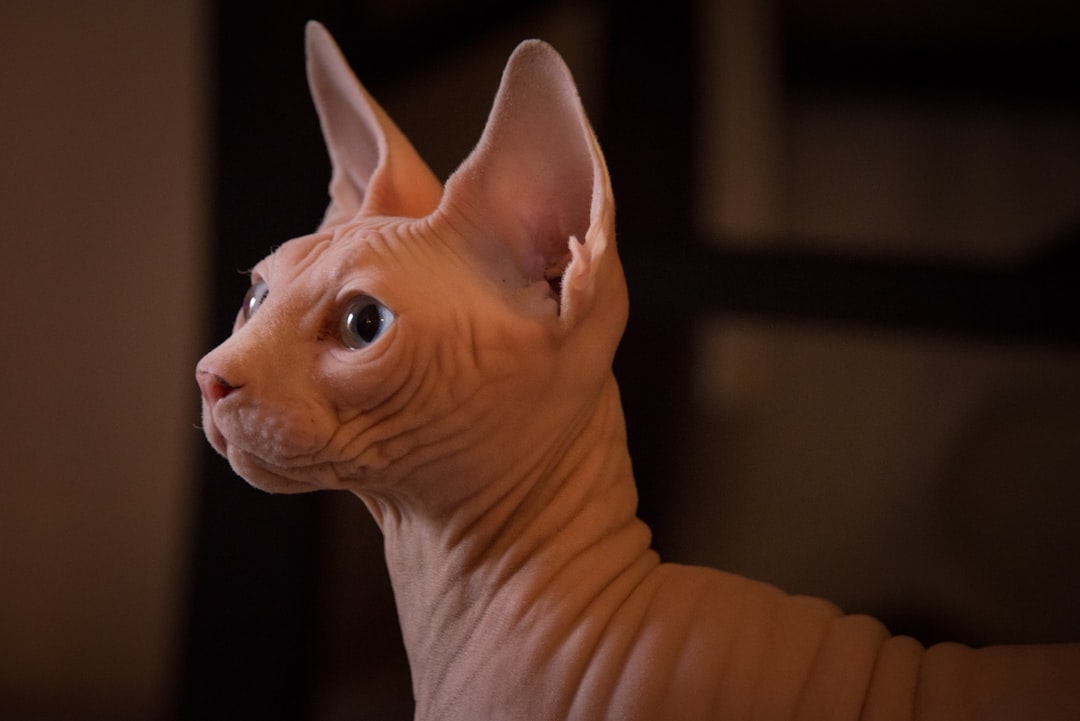
Sphynx cats have significantly different nutritional needs compared to their furry counterparts due to their unique physiology. Sphynx cats reportedly require significantly more calories than other breeds due to their hairless bodies and higher metabolic rate for temperature regulation. The need for self-generated warmth means your Sphynx’s metabolism works quicker than in most other cat breeds. The elevated metabolic rate needs food, and many Sphynx parents report that their feline is constantly hungry.
Because Sphynx cats have higher energy requirements due to their lack of fur, they burn more calories to regulate their body temperature. Their diet must be high in animal protein, healthy fats, and essential nutrients to maintain muscle mass, skin health, and energy levels. A balanced diet should consist of 35–40% high-quality protein with easily digestible ingredients to support their sensitive stomachs. Regular feeding schedules with smaller, frequent meals help manage their fast metabolism and prevent digestive issues.
Due to their high metabolism, Sphynx cats benefit from frequent, small meals throughout the day. Providing 3 to 4 meals, or leaving kibble out for grazing, helps maintain their energy levels. Ensure they receive a balanced mix of wet and dry food to support hydration and nutritional needs. Since Sphynx cats have vulnerable skin, you should feed them seafood at least twice a week. Fish and crustaceans contain omega-3 fatty acids that support the natural regeneration and hydration of their skin.
Common Health Considerations
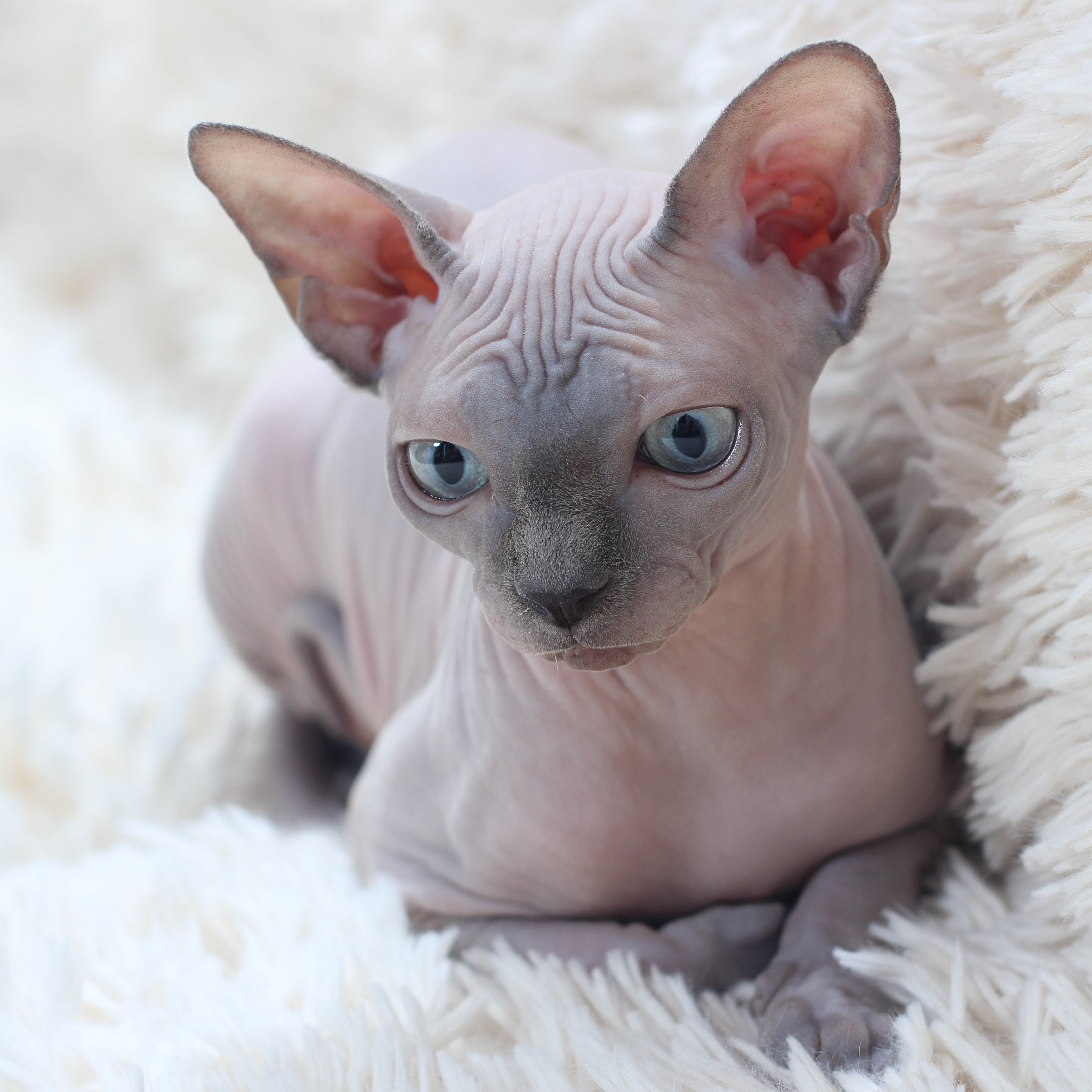
While Sphynx cats are generally healthy, there are certain health issues that potential owners should be aware of. Due to careful selective breeding, Sphynx cats are a generally healthy breed. They have few genetically occurring health problems, but there are still some Sphynx cat health issues you should look out for. It’s also important to know that the breed can be prone to heart disease, including mitral valve dysplasia and heterotrophic cardiomyopathy.
While HCM is the most common heart disease in cats, it can remain undiagnosed in its early stages because there may be no apparent symptoms. But as the disease progresses, cats may experience breathing difficulties and lethargy, potentially leading to heart failure. Because HCM can be prevented in kittens with DNA screening of the breeding stock, prospective pet parents looking to purchase from a Sphynx breeder should verify their kitten’s genetic testing results.
Their hairlessness can cause a few health concerns as well, such as respiratory infections, especially in kittens, and skin disorders like urticaria pigmentosa which results in crusty sores. Sphynx cats are prone to yeast infections due to the accumulation of oils on their skin. Without fur to absorb these oils, they can build up and create an ideal environment for yeast growth. Regular veterinary checkups and proper skin care can help prevent many of these issues from developing.
Temperature Sensitivity and Environmental Needs
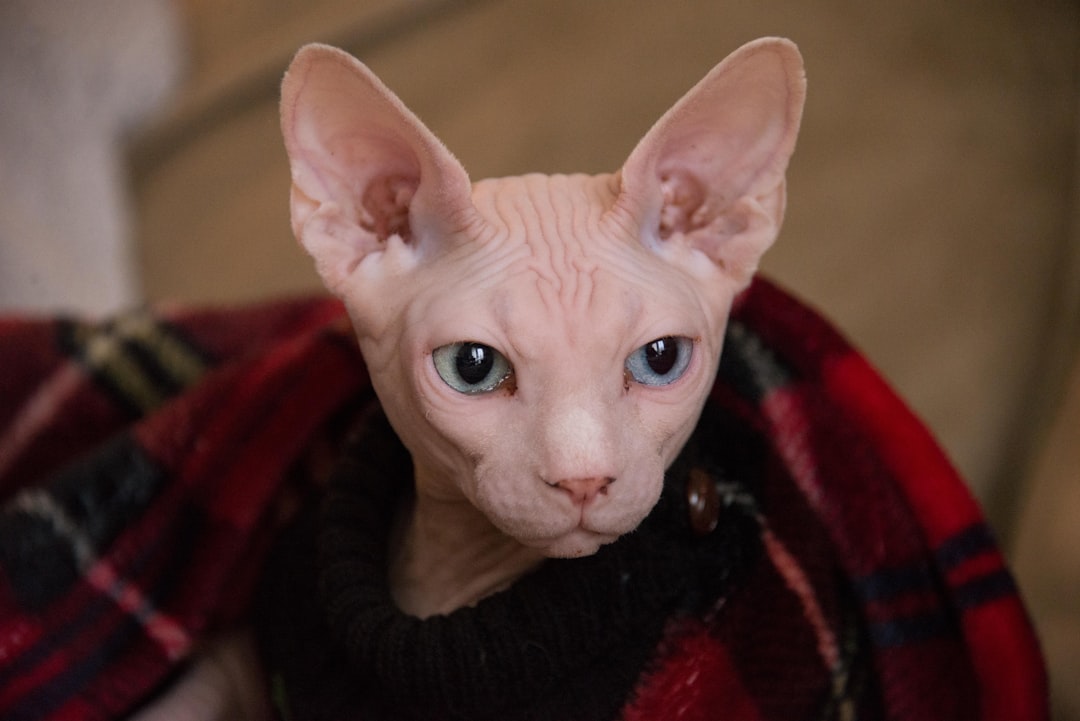
Perhaps one of the most important considerations for Sphynx cat ownership is their extreme sensitivity to temperature variations. The Sphynx should be kept indoors only as they are highly sensitive to the cold and are easily sunburnt. Sphynx cats make excellent house cats and shouldn’t be let outside due to their lack of fur. They can live happily in an apartment or larger house as long as they have quality socialization with humans or other pets.
Sphynx cats may also cause disruptions due to their heat-seeking behavior. This means they’ll often sit or lie on top of computers, televisions, or other objects that produce warmth. One of the reasons sphynx are so cuddly is because they love warming up from your body heat. One way to ensure they stay warm in cold temperatures is to provide plenty of blankets for them to wrap themselves in. You can also provide a heated cat igloo for added warmth.
Sphynx cats enjoy sunbathing, which is great for keeping them warm but may leave them vulnerable to sunburn and skin cancer. Make sure you limit your cat’s exposure to direct sunlight and apply a cat-safe sunscreen liberally to protect it from sunburn. Special care should also be taken to protect these cats from sunburn and skin damage, as well as from cold temperatures, although the sphynx tends to be an expert at finding snug places to curl up and get warm.
Living with a Sphynx: What to Expect
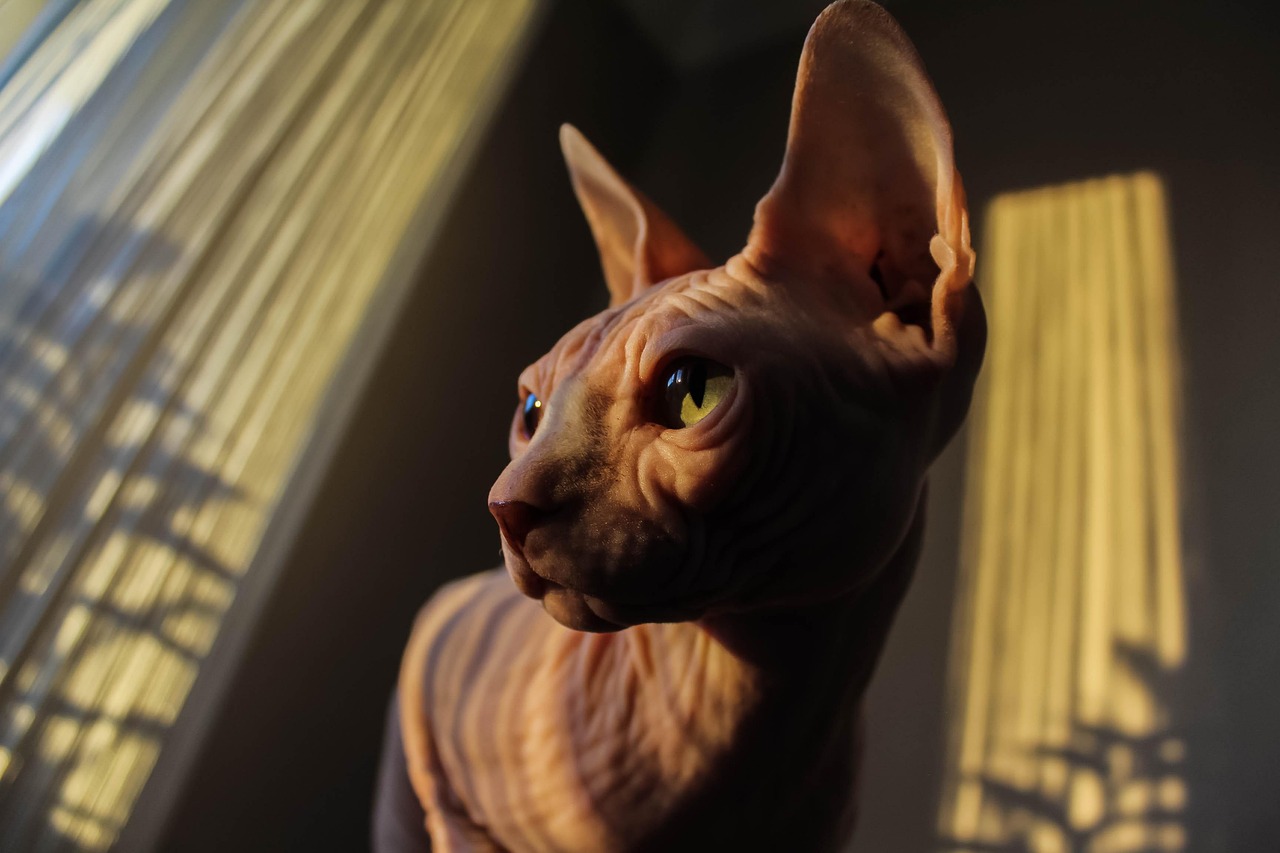
Owning a Sphynx cat is truly a unique experience that differs significantly from caring for traditional furred breeds. The inquisitive Sphynx is high-energy and attention-seeking. They’re also intelligent and masters at using their long toes to pry open doors, cabinets, and drawers so you might need to do some cat-proofing around your home. Sphynx cats love jumping and being in high places. This can cause problems if you don’t supervise your cat regularly, as they may cause trouble or land on inappropriate surfaces.
These cats thrive on routine and consistency, particularly when it comes to their specialized care needs. Weekly baths alone aren’t enough. Oil accumulates daily, so between baths, use a soft, damp cloth or unscented pet wipes to clean your cat. Pay special attention to folds, underarms, the chest, and behind the ears. You’ll need to maintain their bedding more frequently as well, since oils transfer easily to fabrics.
Every cat requires a nail trimming, but for a Sphynx it’s even more important! They lack the fur that protects their skin from abrasions, meaning an unintentional swipe from a sharp claw could lead to an infection so keep those nails in check! The investment in time and specialized care is significant, yet the reward of having such an affectionate and engaging companion makes it worthwhile for dedicated cat lovers.
Owning a Sphynx cat is undoubtedly a commitment that goes well beyond typical feline care, requiring specialized attention to their unique skin, temperature, and emotional needs. These extraordinary cats offer something truly special in return: unwavering loyalty, endless entertainment, and a bond that’s closer to having a devoted companion than a typical pet. Their high-maintenance nature is balanced by their incredible personalities, making them ideal for dedicated cat enthusiasts who appreciate their distinctive charm and are prepared to meet their specialized requirements.
What draws you most to these remarkable hairless companions? Share your thoughts in the comments below.






